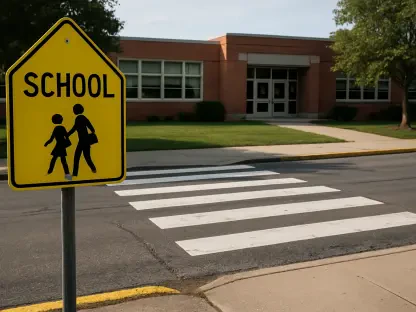Imagine a classroom where discussions on race, identity, and systemic inequality are carefully tiptoed around, not out of disinterest, but out of fear of legal repercussions. In Alabama, this scenario is becoming a reality for many educators and students following a federal judge’s decision to uphold a controversial state law restricting diversity, equity, and inclusion (DEI) initiatives in public schools and colleges. Known as SB 129, this legislation has sparked heated debates about the balance between legislative control and academic freedom. This roundup gathers insights, opinions, and practical tips from various stakeholders—educators, legal analysts, students, and policy advocates—to explore the implications of this ruling and what it means for the future of education in Alabama and beyond.
Background of Alabama’s Anti-DEI Legislation
Alabama’s SB 129, signed into law in 2023, targets DEI programs in public educational institutions by banning funding for initiatives based on race, gender, or other identity markers. It also prohibits compelling students to affirm certain “divisive concepts,” such as inherent responsibility for historical actions tied to race or systemic oppression linked to personal traits. While the law includes exceptions for objective teaching, its broad scope has raised concerns about stifling open dialogue in academic settings.
The federal court’s recent decision to deny a preliminary injunction against this law has intensified discussions. U.S. District Judge R. David Proctor ruled that public institutions have the authority to regulate curricular content, dismissing claims of vagueness and First Amendment violations. This ruling has positioned Alabama as a focal point in a national debate over how far states can go in shaping educational content without infringing on free speech.
Diverse Perspectives on the Legal Outcome
Understanding SB 129: Scope and Limitations
Legal analysts have pointed out that SB 129 specifically restricts activities like student group programming tied to identity characteristics, impacting organizations that support marginalized communities. Reports from educational advocacy groups highlight how such restrictions limit campus events that foster cultural exchange or support for specific demographics, like international student gatherings.
On the flip side, some policy experts argue that the law’s carve-outs for objective teaching provide a reasonable safeguard. They suggest that educators can still address sensitive topics as long as they maintain a neutral stance, avoiding endorsement of controversial ideas. However, many in the academic field find this distinction murky, questioning how neutrality is defined and enforced in practice.
Academic Community’s Concerns: A Threat to Free Speech
Faculty and students from Alabama’s public universities have voiced strong opposition, emphasizing a chilling effect on academic freedom. Many educators report hesitancy in teaching topics like implicit bias or historical inequities, fearing misinterpretation of their intent under the law’s ambiguous guidelines. A notable incident involved the cancellation of a student-led protest event due to concerns over potential violations.
Student advocates argue that such restrictions hinder personal growth and critical thinking, essential components of higher education. They contend that limiting discussions on identity and systemic issues creates an environment where only certain perspectives are deemed safe, undermining the diversity of thought that campuses should nurture.
Legal Defense of Institutional Authority
Legal scholars supporting the judge’s ruling assert that public institutions have long held the right to shape curricula to align with state priorities. They point to Judge Proctor’s reasoning that SB 129 does not ban discussion of divisive concepts outright but regulates how they are presented, ensuring no student feels coerced into adopting specific beliefs.
However, critics within the legal community caution that this deference to institutional control risks overreach. They note that the subjective nature of terms like “objective teaching” could lead to inconsistent enforcement, potentially silencing dissenting voices under the guise of maintaining neutrality.
National Trend: DEI Under Scrutiny
Policy analysts observe that Alabama’s law fits into a broader wave of state-level legislation aimed at curbing DEI initiatives across the United States. Supporters of these measures, including some state legislators, maintain that such laws prevent ideological bias in education, promoting a neutral learning environment free from perceived indoctrination.
Conversely, educational researchers argue that these restrictions may stifle critical inquiry, a cornerstone of academic progress. They warn that if similar rulings uphold anti-DEI laws elsewhere, the cumulative effect could reshape public education, prioritizing political agendas over comprehensive learning experiences.
Practical Takeaways for Navigating the Law
For educators grappling with SB 129, many academic consultants recommend focusing on framing discussions within strictly factual and historical contexts to align with the law’s exceptions. This approach, while limiting in scope, may help avoid accusations of bias or endorsement while still addressing complex topics.
Administrators are advised by policy experts to develop clear internal guidelines that interpret the law’s vague terms, providing staff with concrete examples of permissible content. Such measures could reduce uncertainty and protect against potential legal challenges, though they require careful balancing to avoid self-censorship.
Students and faculty looking to advocate for change are encouraged by activist groups to engage in dialogue through off-campus platforms or independent forums where legal restrictions may not apply. Forming coalitions with national organizations focused on academic freedom can also amplify their voices, pushing for legislative clarity or reform without directly breaching state mandates.
Reflecting on the Path Forward
Looking back, the debate surrounding Alabama’s anti-DEI law and the federal judge’s decision reveals a profound divide between those prioritizing institutional control and those championing academic freedom. The varied perspectives—from educators feeling constrained to legal minds defending state authority—highlight the complexity of balancing neutrality with open inquiry in education.
Moving forward, stakeholders might consider collaborative efforts to refine such laws, ensuring they protect against bias without curtailing essential discussions. Engaging in state-level advocacy for clearer definitions and stronger protections could be a vital next step. Additionally, exploring case studies from other states with similar legislation may offer valuable lessons, guiding Alabama and beyond toward a more equitable resolution of this contentious issue.









